
The Bottom Line
Introduction
The new SAPPHIRE PULSE Radeon RX 6600 XT GAMING OC is the next custom Radeon RX 6600 XT on the GPU review bench today.
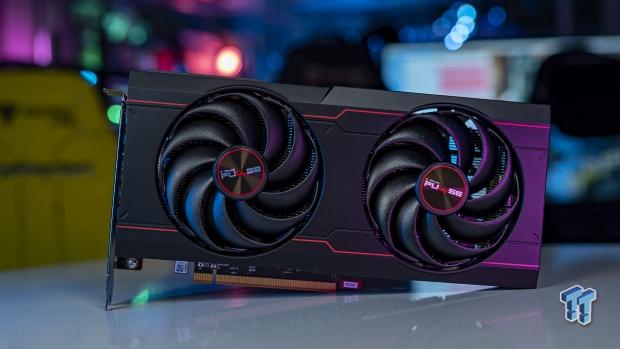
SAPPHIRE isn't changing much here with the PULSE Radeon RX 6600 XT GAMING OC, with the PULSE cooler and style remaining unchanged -- what's new is the Navi 23 GPU and 8GB of GDDR6 underneath. You're not going to see much performance difference between the custom RX 6600 XT cards, so what is SAPPHIRE doing differently here?
The company is aiming closest to the fantasy $379 MSRP that AMD set for the Radeon RX 6600 XT, where it commands just a $20 increase at $399 -- but I'm sure if you find it, it's going to cost much more than that. But when you consider competing cards can be $50, $100, $150+ more than that $379 MSRP... that's where SAPPHIRE comes into play with its new PULSE Radeon RX 6600 XT GAMING OC graphics card.
Let's dive right into it!

Everything You Need to Know About The RX 6600 XT


AMD's new Radeon RX 6600 XT is everything we've come to know and love about the Radeon RX 6000 series graphics cards: we have the kick-ass RDNA 2 architecture, 8GB of GDDR6 memory, Infinity Cache, HDMI 2.1 connectivity, FidelityFX Super Resolution (FSR), ray tracing, and everything in between.

The new Radeon RX 6600 XT has 8GB of GDDR6 memory clocked at 16Gbps on a 128-bit memory bus with 32MB of AMD Infinity Cache (down from the 128MB on the higher-end Radeon RX 6800 XT for example). Infinity Cache helps the Radeon RX 6600 XT swing above its weight, especially when compared with previous-gen GPUs in the same "price range" as the RX 6600 XT.

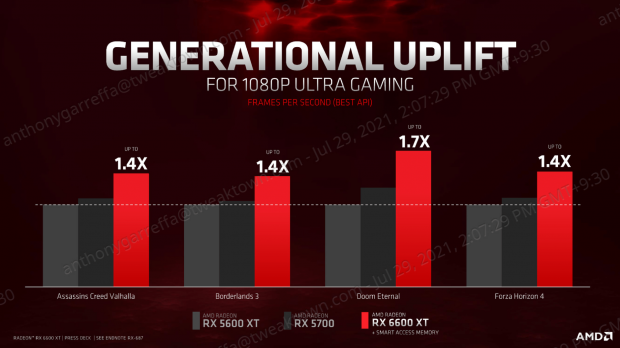

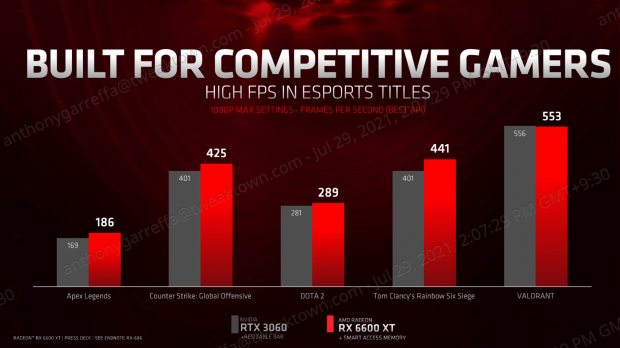
AMD is marketing its new RDNA 2-powered Radeon RX 6600 XT graphics card up against NVIDIA's previous-gen Pascal-based GeForce GTX 1060 and showing that it has far over 100%+ performance gains in the latest titles. This is a huge deal for gamers that have a GTX 1060 or RX 5x0 series graphics card, and want an RDNA 2-powered upgrade... the Radeon RX 6600 XT is a fantastic option for 1080p gamers.
Hell, the Radeon RX 6600 XT is even capable of beating NVIDIA's new Ampere-powered GeForce RTX 3060 graphics card, but not the GeForce RTX 3060 Ti -- we'll have more on that later, but AMD has positioned the new RX 6600 XT very well in the performance department.




Add into the fact you've got FSR support -- at least in the small amount of games available now, is another nice touch for the Radeon RX 6600 XT.
SAPPHIRE + AMD marketing



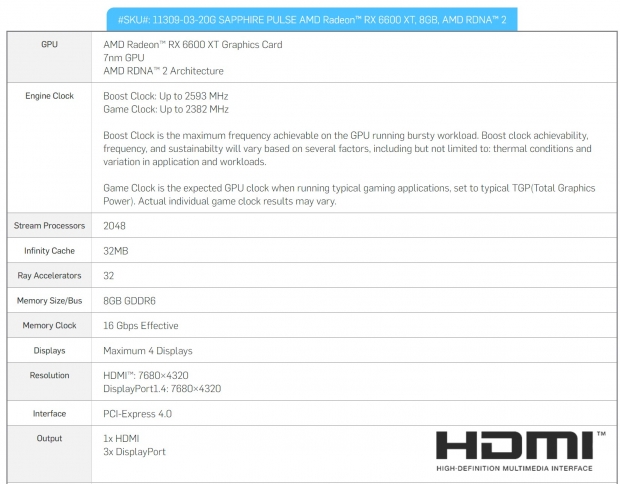

Detailed Look
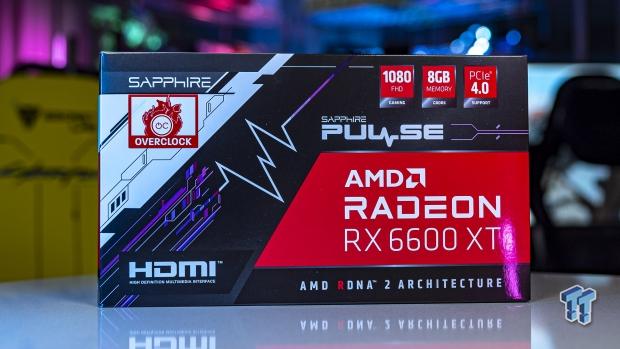

The retail packaging isn't too flash, but it's the usual SAPPHIRE PULSE affair -- this isn't a high-end flagship TOXIC member.

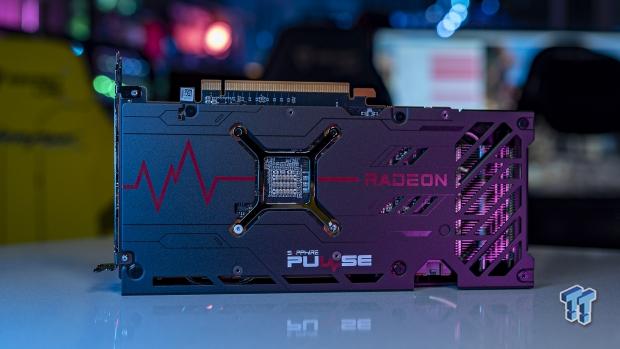
I've been a fan of the PULSE cards from SAPPHIRE for a while now, so the new PULSE Radeon RX 6600 XT GAMING OC is no different. It looks great -- especially considering it's cheaper than its competitors and yet it doesn't look like it's a bargain-basement GPU.


I'm digging the tweaks to the style at the top, with clear and bright "RADEON" branding in the bottom right of the top of the card. The single 8-pin PCIe power connector is a trend with all Radeon RX 6600 XT graphics cards so far.
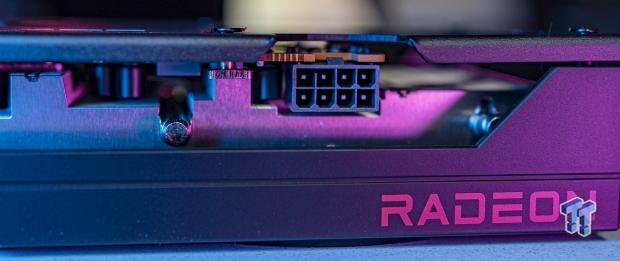
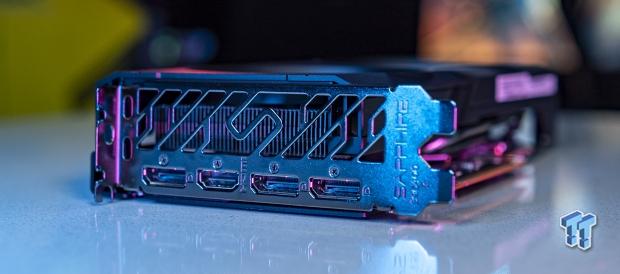
We have the same display connectivity across the board with the Navi 23-based Radeon RX 6600 XT, and that's 3 x DisplayPort 1.4 and 1 x HDMI 2.1 connector. This means you're all ready for right up to 4K120 and 8K60 through either of the DP1.4 or HDMI 2.1 connectors.
Test System Specs
Latest upgrade:
Sabrent sent over their huge Rocket Q 8TB NVMe PCIe M.2 2280 SSD, which will be my new Games install SSD inside of my main test bed.

I've got a new upgrade inside of my GPU test bed before my change to a next-gen test bed, where I will be preparing for NVIDIA's next-gen Ampere graphics cards and AMD's next-gen RDNA 2 graphics cards.

Sabrent helped out with some new storage for my GPU test beds, sending over a slew of crazy-fast Rocket NVMe PCIe M.2 2280 SSDs. I've got this installed into my GPU test bed as the new Games Storage drive, since games are so damn big now. Thanks to Sabrent, I've got 2TB of super-fast M.2 PCIe 3.0 x4 SSD storage now.

Anthony's GPU Test System Specifications
I've recently upgraded my GPU test bed -- at least for now, until AMD's new Ryzen 9 5950X processor is unleashed then the final update for 2020 will happen and we'll be all good for RDNA 2 and future Ampere GPU releases. You can read my article here: TweakTown GPU Test Bed Upgrade for 2021, But Then Zen 3 Was Announced.




- CPU: AMD Ryzen 7 3800X (buy from Amazon)
- Motherboard: ASUS ROG X570 Crosshair VIII HERO (buy from Amazon)
- Cooler: CoolerMaster MasterLiquid ML360R RGB (buy from Amazon)
- RAM: G.SKILL Trident Z NEO RGB 32GB (4x8GB) (F4-3600C18Q-32GTZN) (buy from Amazon)
- SSD: Sabrent 2TB Rocket NVMe PCIe 4.0 M.2 2280 (buy from Amazon)
- PSU: be quiet! Dark Power Pro 11 1200W (buy from Amazon)
- Case: InWin X-Frame 2.0
- OS: Microsoft Windows 10 Professional x64 (buy from Amazon)
Benchmarks - Synthetic
3DMark Fire Strike

3DMark has been a staple benchmark for years now, all the way back to when The Matrix was released and Futuremark had bullet time inspired benchmarks. 3DMark is the perfect tool to see if your system - most important, your CPU and GPU - is performing as it should. You can search results for your GPU, to see if it falls in line with other systems based on similar hardware.



3DMark TimeSpy
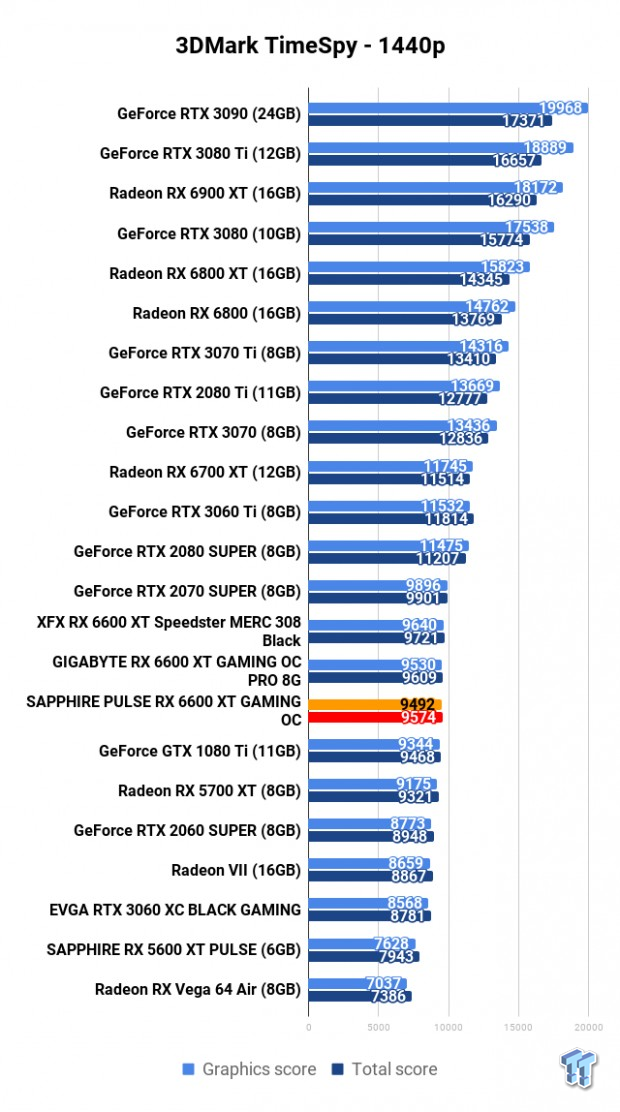

Heaven - 1080p
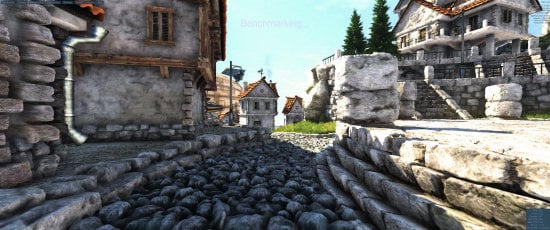
Heaven is an intensive GPU benchmark that really pushes your silicon to its limits. It's another favorite of ours as it has some great scaling for multi-GPU testing, and it's great for getting your GPU to 100% for power and noise testing.



Benchmarks - 1080p
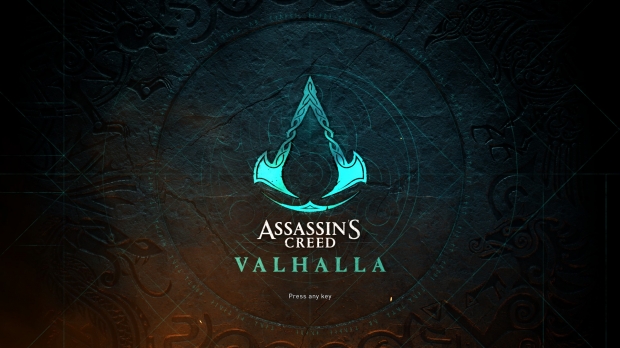


Assassin's Creed: Valhalla is the latest game to be inserted into our benchmark suite, with Ubisoft Montreal using its AnvilNext engine to power the game. It scales really well across the cards, and has some surprising performance benefits with AMD's new Big Navi GPUs.
You can buy Assassins Creed: Valhalla at Amazon.

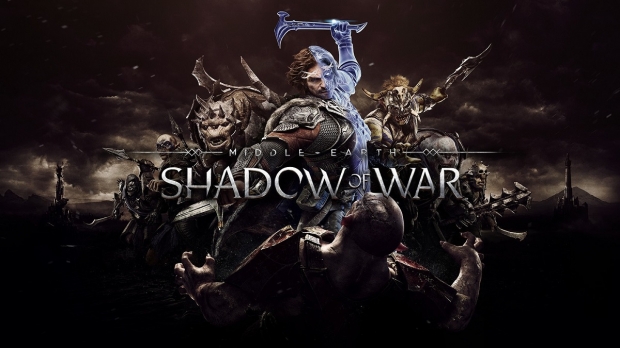


Middle-earth: Shadow of War is a sequel to the popular Shadow of Mordor, which was powered by the Lithtech engine. When cranked up to maximum detail, it will chew through your GPU and its VRAM like it's nothing.
You can buy Middle-earth: Shadow of War at Amazon.

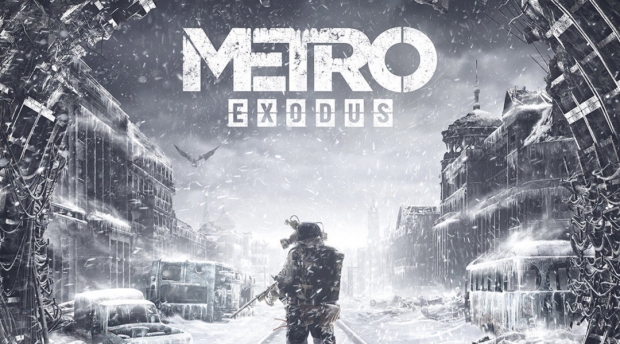

Metro Exodus is one of the hardest tests that our graphics cards have to go through, with 4A Games' latest creation being one of the best looking games on the market. It is a serious test that pushes GPUs to their limits, and also features RTX technologies like DLSS.




Shadow of the Tomb Raider is one of the latest games to join our graphics card benchmark lineup, with the game built using the Foundation engine as a base, the same engine in Rise of the Tomb Raider. Eidos Montreal R&D department made lots of changes to the engine during the development of Shadow of the Tomb Raider to make it one of the best-looking games out right now.

1080p Benchmark Performance Thoughts
84FPS average in Assassin's Creed: Valhalla, edging out the competition here with XFX and GIGABYTE's custom Radeon RX 6600 XT offerings. We have the SAPPHIRE PULSE RX 6600 XT losing by 1-2FPS against the same cards in Shadow of War, but for the most part you wouldn't tell the difference between any RX 6600 XT card and a few FPS here and there.
Fantastic performance at 1080p for a card that consumes less than 150W.
Benchmarks - 1440p

Assassin's Creed: Valhalla is the latest game to be inserted into our benchmark suite, with Ubisoft Montreal using its AnvilNext engine to power the game. It scales really well across the cards, and has some surprising performance benefits with AMD's new Big Navi GPUs.
You can buy Assassins Creed: Valhalla at Amazon.
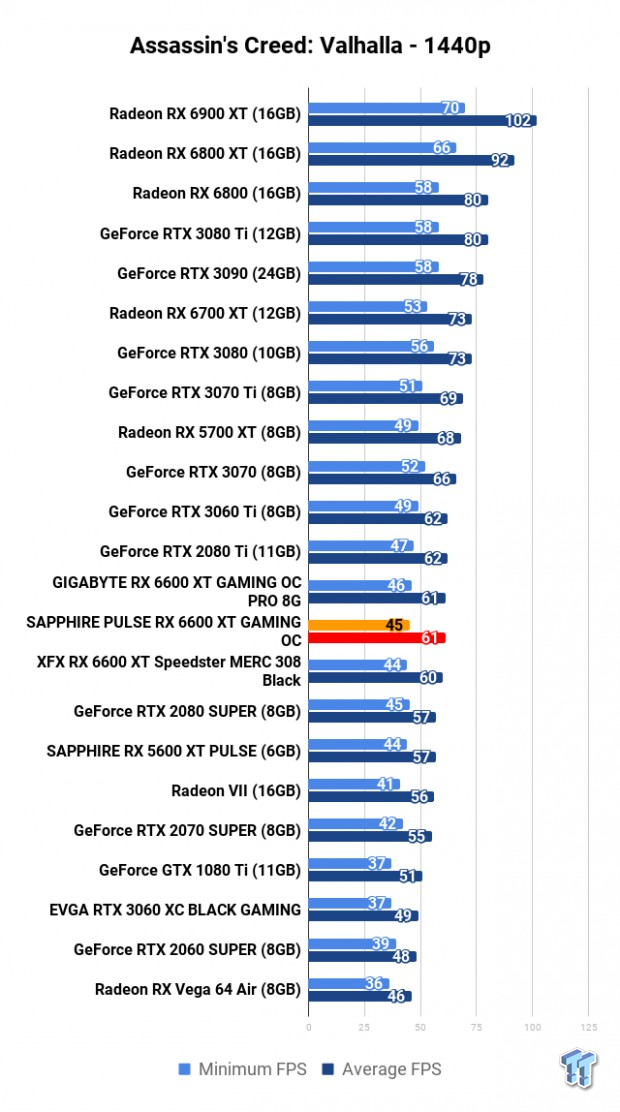

Middle-earth: Shadow of War is a sequel to the popular Shadow of Mordor, which was powered by the Lithtech engine. When cranked up to maximum detail, it will chew through your GPU and its VRAM like it's nothing.
You can buy Middle-earth: Shadow of War at Amazon.


Metro Exodus is one of the hardest tests that our graphics cards have to go through, with 4A Games' latest creation being one of the best looking games on the market. It is a serious test that pushes GPUs to their limits, and also features RTX technologies like DLSS.


Shadow of the Tomb Raider is one of the latest games to join our graphics card benchmark lineup, with the game built using the Foundation engine as a base, the same engine in Rise of the Tomb Raider. Eidos Montreal R&D department made lots of changes to the engine during the development of Shadow of the Tomb Raider to make it one of the best-looking games out right now.

1440p Benchmark Performance Thoughts
I wouldn't recommend AMD's new Radeon RX 6600 XT for 1440p gaming, but if the game is right -- like for example, Assassin's Creed: Valhalla -- then you're pulling 60FPS average at 1440p. Not too damn bad at all, AMD.
Shadow of War still cranks along at 88FPS average, while Shadow of the Tomb Raider gives you 102FPS average at 1440p. Next-gen console crushing performance, even at 1440p.
Benchmarks - 4K

Assassin's Creed: Valhalla is the latest game to be inserted into our benchmark suite, with Ubisoft Montreal using its AnvilNext engine to power the game. It scales really well across the cards, and has some surprising performance benefits with AMD's new Big Navi GPUs.
You can buy Assassins Creed: Valhalla at Amazon.


Middle-earth: Shadow of War is a sequel to the popular Shadow of Mordor, which was powered by the Lithtech engine. When cranked up to maximum detail, it will chew through your GPU and its VRAM like it's nothing.
You can buy Middle-earth: Shadow of War at Amazon.


Metro Exodus is one of the hardest tests that our graphics cards have to go through, with 4A Games' latest creation being one of the best looking games on the market. It is a serious test that pushes GPUs to their limits, and also features RTX technologies like DLSS.


Shadow of the Tomb Raider is one of the latest games to join our graphics card benchmark lineup, with the game built using the Foundation engine as a base, the same engine in Rise of the Tomb Raider. Eidos Montreal R&D department made lots of changes to the engine during the development of Shadow of the Tomb Raider to make it one of the best-looking games out right now.

4K Benchmark Performance Thoughts
Please don't buy the Radeon RX 6600 XT thinking you're going to be blazing through games at 120FPS at 4K... but you're still going to achieve 30FPS average for the most part -- in most AAA titles. Not bad for a mid-range GPU.
Power Consumption & Temps


2565MHz GPU boost, with GPU temps sitting at a rather respectable 57C while the GPU hotspot sits at around 68C -- 135W for the GPU power consumption and full system power of less than 200-250W.
What's Hot, What's Not
What's Hot
- Dual fan cooler: The dual-fan cooler that SAPPHIRE uses on its PULSE Radeon RX 6600 XT is impressive, keeping the GPU at under 60C under benchmark and gaming loads. It looks great as well, with no blingly RGB lighting blinding your eyes during your games.
- Closest to AMD MSRP price of $379: SAPPHIRE is staying as close as it can AMD's invisible MSRP of $379, but you shouldn't be paying too much more than that for a 1080p gaming card anyway.

What's Not
- One of the hotter RX 6600 XT cards: If you buy your graphics cards based on GPU temps alone, there are cooler cards -- but the SAPPHIRE PULSE RX 6600 XT still runs at sub 60C which is great.
Final Thoughts
SAPPHIRE provides some great performance with its custom PULSE Radeon RX 6600 XT GAMING OC graphics card, with truly impressive thermal results out of one of the more basic RX 6600 XT cards out of the stack of Navi 23-powered cards I've reviewed so far.

Sub 60C temperatures under load, 1080p and 1440p powerhouse performance for the price -- which you'll find the SAPPHIRE PULSE Radeon RX 6600 XT GAMING OC cheaper than other custom Radeon RX 6600 XT cards -- is a great package. You don't need a high-end Nitro variant of SAPPHIRE's Radeon RX 6600 XT to squeeze what needs to be squeezed out of the Navi 23 GPU + 8GB of GDDR6 memory.
I wouldn't be recommending any of the Radeon RX 6600 XT graphics cards for 4K gaming, but for 1080p gaming at 60-120FPS and beyond then you're in safe hands here. If you've had your eye on SAPPHIRE's new custom PULSE Radeon RX 6600 XT GAMING OC graphics card, don't hesitate if you find it for an appropriate amount of money (given how nuts GPU pricing is right now).
You can save a huge chunk of money ($100-$150+) over another custom AIB card, and still get tremendous thermal performance and a single 8-pin PCIe power connector. SAPPHIRE, nice work with the PULSE Radeon RX 6600 XT GAMING OC -- an impressive card at the lower-end of the RX 6600 XT scale.

Performance |
95% |
Quality |
95% |
Features |
100% |
Value |
N/A |
Overall |
97% |
SAPPHIRE's new PULSE Radeon RX 6600 XT GAMING OC gives you everything you need for 1080p gaming. Sub 60C temps, it's quiet, and it looks great.

What's in Anthony's PC?
- CPU: Intel Core i5-12600K
- MOTHERBOARD: GIGABYTE Z690 AERO-G
- RAM: Corsair 32GB DDR4-3200
- GPU: NVIDIA GeForce RTX 4090 24GB
- SSD: Sabrent 4TB Rocket 4 Plus
- OS: Windows 11 Pro
- CASE: Lian Li O11 Dynamic XL
- PSU: ASUS ROG Strix 850W
- KEYBOARD: Logitech G915 Wireless
- MOUSE: Logitech G502X Wireless
- MONITOR: LG C3 48-inch OLED TV 4K 120Hz
Similar Content
Related Tags

